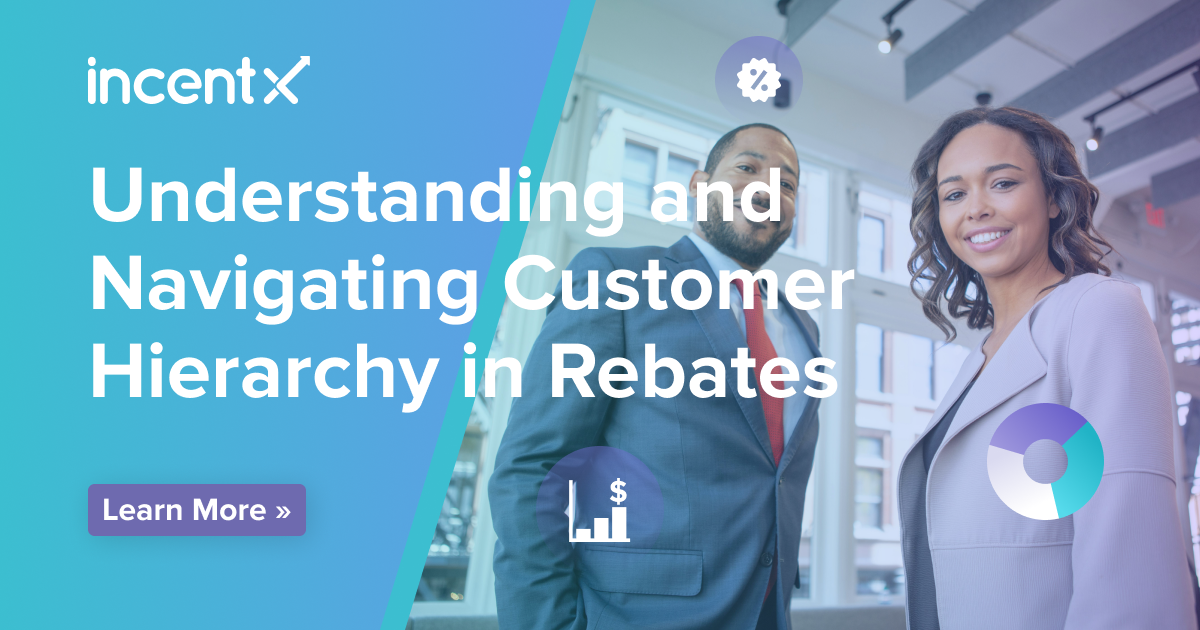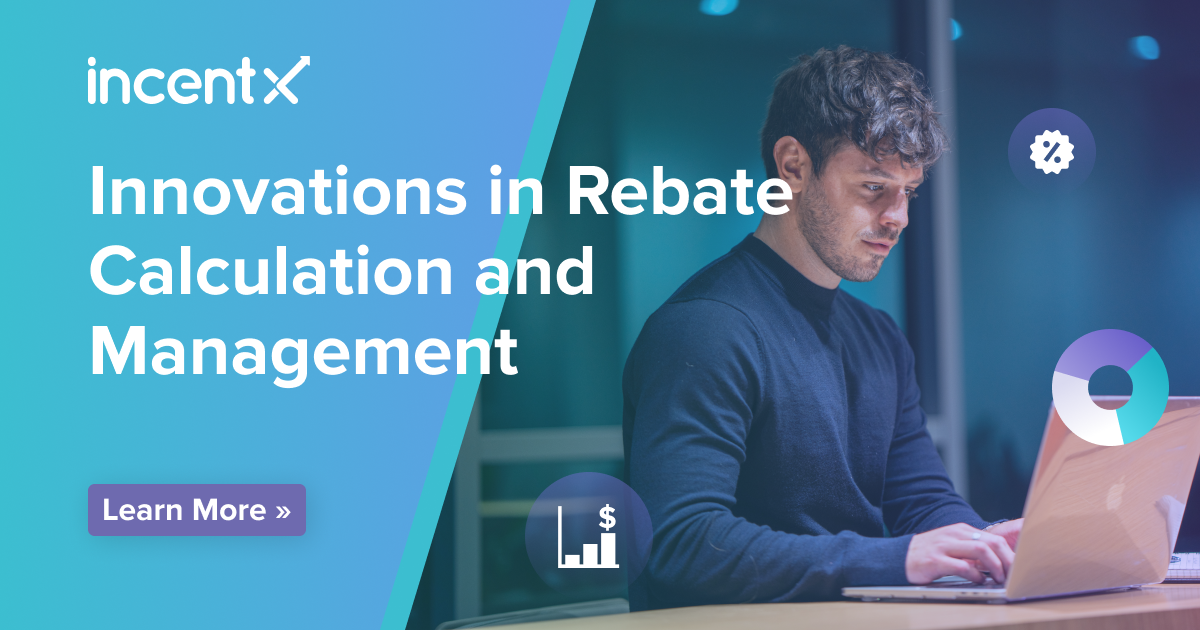Introduction to Rebate Management
In today’s competitive business landscape, companies constantly seek innovative strategies to optimize operations, foster customer loyalty, boost sales and drive revenue growth. One such strategy that has gained immense prominence is rebate management.
The Significance of Rebate Management in Modern Business
Rebate management is not just about managing discounts or cash-back offers; it’s a comprehensive process that involves crafting strategic agreements, tracking sales performance, ensuring timely and accurate rebate payments, and analyzing the effectiveness of rebate programs. It’s a bridge that connects suppliers, distributors, and customers, fostering transparent and mutually beneficial relationships.
In modern business, rebates are pivotal in influencing purchasing decisions, incentivizing volume purchases, and promoting brand loyalty.
They act as powerful tools for companies to differentiate themselves in a crowded market, offering value to customers while protecting brand integrity. Moreover, with the increasing complexity of trade agreements and the global nature of business, managing rebates has become more intricate than ever.
This is where the significance of a streamlined rebate claims management process comes into play. It ensures that companies can handle multi-dimensional rebate programs efficiently, minimize errors in rebate calculations, and maintain positive customer relationships.
Learn more about Rebate Accounting here.
How Rebate Management Software is Revolutionizing the Industry
Enter rebate management software – a game-changer in the world of rebate management. Traditional rebate management methods, often reliant on manual processes and spreadsheets, are fraught with challenges. They can lead to inaccuracies in rebate calculations, delayed payments, and even strained relationships with channel partners.
Rebate management software addresses these challenges head-on. By automating the intricate processes involved in managing rebates, such software ensures accuracy, timeliness, and transparency. It offers real-time insights into rebate performance metrics, allowing businesses to make informed decisions.
For example, sales teams can leverage the software to track customer purchases against rebate agreements, ensuring that customers receive the correct rebate amounts promptly. On the other hand, finance teams benefit from the software’s ability to provide a clear picture of rebate dollars, aiding in cash flow management and financial forecasting.
The best rebate management software solutions have advanced features like AI-driven analytics, integration capabilities with other business systems, and customizable dashboards. These features not only simplify the rebate management process but also provide businesses with strategic insights to refine their rebate programs and drive sales growth.
As businesses continue to recognize the strategic importance of rebates in their growth plans, the role of rebate management and the software that supports it will only become more pivotal. It’s not just about managing discounts; it’s about leveraging rebates as strategic tools to drive business success in the modern era.
What is Rebate Management?
Rebate management, at its core, is a multifaceted discipline that goes beyond the simple concept of offering discounts or cash-backs. It encompasses a range of activities and processes designed to implement, track, and analyze rebate programs strategically. As businesses evolve and the marketplace becomes increasingly competitive, understanding and mastering rebate management becomes crucial.
Defining the Rebate Management Process
Rebate management can be best understood as a systematic approach to designing, administering, and monitoring rebate programs. The process begins with creating a rebate agreement, which outlines the terms and conditions under which rebates will be offered. This could be based on various criteria, such as the volume of goods purchased, the value of purchases, or specific promotional periods.
Once the agreement is in place, the next step involves tracking sales or purchases against the terms of the agreement. This ensures that all qualifying transactions are identified and the appropriate rebate amounts are accrued. As transactions occur, the rebate management system keeps a record, ensuring that once the criteria to calculate rebates are met, the rebates are processed and paid out to the eligible parties.
But the process doesn’t end there. An integral part of rebate management is the post-payment analysis. This involves evaluating the effectiveness of the rebate program, understanding its impact on sales and customer behavior, and identifying areas for improvement or optimization.
The Importance of Managing Rebates Effectively
Effective rebate management is not just about ensuring that payments are made accurately and on time. It’s about leveraging rebates as strategic tools to achieve broader business objectives. Here’s why managing rebates effectively is crucial:
- Enhanced Customer Loyalty: Rebates can act as powerful incentives, encouraging customers to make repeat purchases or choose one brand over another. By managing these incentives effectively, businesses can foster deeper customer loyalty and drive long-term revenue.
- Financial Accuracy: Mistakes in rebate calculations or payments can lead to financial discrepancies, affecting a company’s bottom line. Effective rebate management ensures financial accuracy, minimizing the risk of overpayments or disputes.
- Strategic Decision Making: With a robust rebate management system, businesses can gain valuable insights into customer behavior, product performance, and market trends. This data can inform strategic decisions, helping businesses refine rebate programs and achieve better results.
- Operational Efficiency: Automating the rebate management process eliminates manual tasks, reduces errors, and speeds up the rebate payment processes. This not only improves operational efficiency but also enhances customer satisfaction.
- Brand Integrity: Rebates, when managed effectively, allow businesses to offer incentives without compromising on the perceived value of their products. This helps in maintaining brand integrity and positioning in the market.
Rebate management is not just an operational necessity; it’s a strategic imperative. As the business landscape continues to evolve, companies that harness the power of rebates and manage them effectively will be better positioned to thrive and succeed.
Diving Deep into Rebates
Rebates, often perceived as mere financial incentives, play a pivotal role in the intricate dance of commerce. They influence purchasing behaviors, foster brand loyalty, and serve as strategic tools for businesses to navigate the competitive marketplace. But what exactly is a rebate, and how does it differ from the commonly understood discount? Let’s delve deeper.
What is a Rebate? Understanding the Basics
A rebate is a financial incentive offered by sellers to buyers, typically contingent upon certain criteria being met. Unlike immediate discounts that reduce the purchase price upfront, rebates are typically provided after the purchase has been made. The criteria for earning a rebate can vary – from purchasing a specific volume of goods to reaching a certain value of purchases within a stipulated time frame.
The rebate process here generally involves the buyer paying the full price initially and then receiving a rebate payment later once the agreed-upon conditions are fulfilled. This post-purchase nature of rebates makes them unique and strategically valuable for businesses, as they can drive specific consumer behaviors, such as bulk purchasing or brand loyalty.
The Difference Between Rebates and Discounts
While both rebates and discounts serve to reduce the effective price a customer pays for a product or service, they operate differently:
- Timing: The most fundamental difference is in the timing. Discounts are applied at the point of sale, immediately reducing the purchase price. Rebates, on the other hand, are applied after the sale, requiring the customer to pay the full price upfront and receive a refund or credit later.
- Purpose: Discounts are often used as a broad strategy to attract customers, clear stock, or compete on price. Rebates, being contingent on certain conditions, are more strategic and designed to incentivize specific behaviors such as bulk purchases, repeated purchases, or loyalty to a brand.
- Perception: Discounts can sometimes risk devaluing a product or brand if used excessively. Rebates, since they require effort on the part of the customer to claim, can maintain a product’s perceived value while still offering a financial incentive.
Types of Rebates
Rebates come in various forms, tailored to the specific goals a business aims to achieve. Some common types include:
- Vendor Rebates: These are rebate payments made by a supplier or manufacturer to a distributor or retailer. They’re often used to incentivize the retailer to stock or promote a particular product or to reward high sales volumes.
- Customer Rebates: These are direct incentives to the end consumer. They can be offered for various reasons, such as promoting a new product, encouraging repeat purchases, or driving sales during a particular period.
- Volume-based Rebates: These rebates are contingent on the quantity of goods purchased. For instance, a buyer might receive a rebate if they purchase more than a specified number of units.
- Value-based Rebates: Here, the rebate is tied to the total value of purchases. For example, a buyer might earn a rebate if their total purchases exceed a certain dollar amount.
- Growth-based Rebates: These are designed to incentivize increased purchasing over time. If a buyer’s purchases grow by a certain percentage compared to a previous period, they might earn a rebate.
In commerce, rebates serve as nuanced tools, allowing businesses to achieve many objectives, from boosting sales to building lasting customer relationships. Understanding their intricacies is the first step in harnessing their full potential.
The Role of Rebate Management in Business Strategy
In business strategy, rebate management stands out as a powerful thread, weaving together various elements to create a cohesive and impactful narrative. It’s not just about offering financial incentives; it’s about aligning these incentives with broader business goals to drive growth, loyalty, and profitability. Let’s explore the strategic significance of rebate management in today’s business landscape.
Boosting Sales and Fostering Customer Loyalty
Rebates, when implemented effectively, can be potent tools for driving sales. By offering financial incentives contingent on specific purchasing behaviors, businesses can encourage customers to buy more, buy often, or even try new products. But the magic of rebates doesn’t stop at boosting sales volumes; it extends to building and nurturing customer loyalty.
- Incentivizing Volume Purchases: By offering rebates tied to volume or value thresholds, businesses can motivate customers to increase their order sizes. This not only boosts immediate sales but also optimizes inventory turnover and reduces per-unit shipping costs.
- Encouraging Repeat Business: Rebates can be structured to reward repeat purchases or loyalty to a brand. For instance, a customer might earn a rebate after their third purchase within a year, incentivizing them to choose the same brand repeatedly.
- Launching New Products: When introducing a new product to the market, rebates can help reduce the perceived risk for customers, encouraging them to try something new. Once they experience the product’s value, they’re more likely to become regular buyers.
- Building Long-term Relationships: Rebates, especially when combined with other loyalty programs, can foster long-term customer relationships. By consistently offering value and recognizing customer loyalty, businesses can create a bond of trust and preference with their customers.
How Rebate Programs Drive Strategic Initiatives and Optimize Revenue
Rebate programs, when aligned with strategic initiatives, can serve as catalysts for business growth and revenue optimization. Here’s how:
- Data-driven Insights: Rebate management systems capture a wealth of data, from purchasing patterns to customer preferences. This data can be analyzed to gain insights into market trends, product performance, and customer behavior, informing strategic decisions.
- Optimizing Pricing Strategies: Rebates allow businesses to offer incentives without permanently reducing product prices. This flexibility can be leveraged to test different pricing strategies, gauge customer price sensitivity, and optimize revenue.
- Enhancing Brand Perception: While discounts can sometimes devalue a brand, rebates maintain the product’s perceived value. By offering rebates, businesses can position themselves as value-driven without compromising brand equity.
- Strengthening Channel Partnerships: For businesses that rely on distributors or retailers, vendor rebates can strengthen channel partnerships. By offering rebates tied to sales targets or promotional activities, manufacturers can align their channel partners’ goals with their own, driving collaborative growth.
- Risk Mitigation: Rebates can be structured to protect businesses against potential risks. For instance, a manufacturer might offer a rebate tied to timely payments, incentivizing distributors to pay their invoices on time and improving cash flow.
Rebate management, when integrated into a broader business strategy, can drive growth, optimize revenue, and foster lasting relationships. It’s a testament to the power of strategic incentives in shaping the trajectory of modern businesses.
Challenges in Rebate Management
Rebate management, while offering many strategic advantages, has its hurdles. As businesses scale and their operations become more intricate, managing rebates can become a daunting task. From manual processes to outdated systems, several challenges can impede the effective management of rebate programs.
The Pitfalls of Managing Rebates Manually
In an era dominated by digital transformation, many businesses still rely on manual methods to manage their rebates. While this might seem feasible for smaller operations, as the scale and complexity grow, the limitations of manual processes become glaringly evident. Here are some of the pitfalls associated with managing rebates manually:
- Inaccuracy and Errors: Manual processes, often reliant on spreadsheets or paper-based systems, are prone to human errors. Misentries, miscalculations, or oversight can lead to inaccurate rebate calculations, affecting financial integrity.
- Time-Consuming: Manually tracking sales against rebate agreements, calculating rebate amounts, and processing payments can be labor-intensive. This not only consumes valuable time but also diverts resources from other strategic activities.
- Lack of Real-time Insights: Without an automated system, businesses struggle to gain real-time insights into the performance of their rebate programs. This can hinder timely decision-making and adjustments to the programs.
- Audit Challenges: Manual systems lack the robust tracking and reporting features required for audits. This can pose challenges during financial reviews or when resolving disputes with partners.
Delayed Payments, Slower Cash Flow, and Customer Dissatisfaction
Timely and accurate rebate payments are crucial for maintaining trust and fostering long-term relationships with customers and partners. However, inefficiencies in the rebate management process can lead to delays, impacting not just the financial health of a business but also its reputation. Here’s how delayed payments can ripple into broader challenges:
- Payment Delays: Manual rebate management can delay processing and disbursing rebate payments. This not only affects cash flow but can also strain relationships with customers or partners awaiting their rebates.
- Cash Flow Impediments: Delays in recognizing rebate liabilities or processing payments can disrupt cash flow forecasting and management, affecting a company’s financial health.
- Eroding Trust: Consistent delays or errors in rebate payments can erode trust and goodwill. Customers or partners might perceive the business as unreliable, leading to dissatisfaction and potentially affecting future business relationships.
The Limitations of Legacy Systems in Handling Complex Rebate Programs
As rebate programs evolve, becoming more nuanced and multifaceted, the systems supporting them need to keep pace. Legacy systems, often designed for a simpler business landscape, struggle to accommodate the intricacies of modern rebate agreements. Here’s a closer look at the challenges posed by outdated systems:
- Lack of Flexibility: Legacy systems, designed for simpler times, often lack the flexibility to handle the complexities of modern rebate programs. Whether it’s multi-dimensional rebate structures, tiered agreements, or growth-based incentives, outdated systems can struggle to keep up.
- Integration Challenges: Legacy systems might not easily integrate with other business systems, such as CRM or ERP. This can lead to data silos, where crucial information is trapped in one part of the business, hindering holistic decision-making.
- Maintenance and Upgrades: Older systems require regular maintenance and might not support the latest features or upgrades. This not only increases operational costs but also poses the risk of the system becoming obsolete.
- Security Concerns: Legacy systems might not adhere to the latest security standards, posing risks of data breaches or unauthorized access.
By understanding and addressing these challenges, businesses can streamline their rebate management processes, ensuring efficiency, accuracy, and customer satisfaction.
Rebate Management Software: A Game-Changer
In the dynamic world of business, where agility and efficiency are paramount, relying on outdated methods for crucial processes can be a significant setback. This is especially true for rebate management, a domain rife with complexities and intricacies. Enter rebate management software, a modern solution designed to address the challenges of rebate management head-on, transforming it from a cumbersome task into a strategic advantage.
Features and Capabilities of the Best Rebate Management Software
The best rebate management software is not just about automating tasks; it provides a comprehensive suite of tools that empower businesses to manage, analyze, and optimize their rebate programs precisely. Here’s what sets apart top-tier rebate management software:
- Real-time Analytics: Offering insights into the performance of rebate programs, helping businesses understand trends, identify opportunities, and make data-driven decisions.
- Flexible Agreement Structures: Catering to a wide range of rebate agreements, from simple volume-based rebates to complex multi-dimensional programs.
- Seamless Integrations: Ensuring compatibility with other business systems, such as CRMs, ERPs, and financial software, to provide a holistic view of operations.
- Automated Calculations: Eliminate the risk of human error by automating rebate calculations based on predefined criteria.
- Audit Trails: Providing a transparent record of all rebate transactions, aiding in compliance and dispute resolution.
- User-friendly Dashboards: Offering intuitive interfaces that allow users to monitor, manage, and analyze rebate data with ease.
How Rebate Management Software Automates Manual Processes
The transition from manual to automated rebate management is transformative. Here’s how software solutions streamline the process:
- Data Entry Automation: Reducing manual data entry by automatically capturing and processing transaction data.
- Instant Validations: Checking transactions against rebate agreements in real-time, ensuring accuracy and compliance.
- Automated Notifications: Alerting stakeholders about upcoming milestones, payment due dates, or any discrepancies in the process.
- Scheduled Reporting: Generating regular reports on rebate performance, financial implications, and more without manual intervention.
The Benefits of a Centralized Rebate Management System
Centralization is a key feature of modern rebate management software, bringing multiple advantages to the table:
- Unified Data Repository: Storing all rebate-related data in a single, centralized system, ensuring consistency and easy access.
- Enhanced Collaboration: Allowing different departments, from sales to finance, to collaborate seamlessly on rebate management tasks.
- Consistent Processes: Ensuring all rebate management activities, from agreement creation to payment processing, follow a standardized, consistent process.
- Improved Security: Centralized systems often have robust security features, ensuring that sensitive rebate data is protected from breaches or unauthorized access.
Rebate management software is not just a tool; it’s a strategic asset. By automating, centralizing, and optimizing the rebate management process, businesses can unlock unparalleled efficiencies, drive revenue growth, and foster stronger, more transparent relationships with their partners and customers.
Types of Rebate Programs and Their Impact
Rebate programs, while rooted in the principle of offering financial incentives, are diverse in their structure and objectives. They can be tailored to fit a myriad of business goals, from driving sales volumes to fostering long-term loyalty. Understanding the different types of rebate programs and their strategic implications is crucial for businesses aiming to harness the full potential of rebates.
Understanding Customer Rebate Programs and Vendor Rebate Programs
At the heart of rebate programs are the two primary beneficiaries: customers and vendors. Each type of program is designed to incentivize specific behaviors and achieve distinct outcomes:
- Customer Rebate Programs:
- Objective: Primarily aimed at end consumers, these programs incentivize customers to purchase, often contingent on specific criteria like volume, frequency, or value.
- Impact: They can drive immediate sales boosts, encourage repeat business, and enhance consumer brand loyalty.
- Vendor Rebate Programs:
- Objective: These are agreements between manufacturers or suppliers and their distributors or retailers. The goal is often to motivate the latter to stock, promote, or sell a particular product in larger volumes.
- Impact: They can strengthen channel partnerships, ensure product visibility in the market, and drive sales through the supply chain.
The Significance of Tiered Growth-Based Rebate and Multi-Dimensional Rebate Programs
As businesses evolve and markets become more competitive, rebate programs have grown in complexity, offering nuanced incentives to cater to diverse needs:
- Tiered Growth-Based Rebate:
- Objective: These programs reward customers or vendors based on incremental growth. For instance, a 5% rebate might be offered for a 10% increase in purchases, with the rebate percentage rising for higher growth tiers.
- Impact: They motivate continuous growth, encouraging partners or customers to increase their purchase volumes or values consistently.
- Multi-Dimensional Rebate Programs:
- Objective: These programs consider multiple factors or dimensions, such as product type, purchase frequency, region, and more. The rebate is calculated based on a combination of these factors.
- Impact: They allow businesses to target specific market segments, product lines, or regions, optimizing the impact of the rebate program.
How Incentive Programs Boost Brand Loyalty and Sales Growth
Beyond traditional rebates, broader incentive programs play a pivotal role in shaping customer behavior and driving business outcomes:
- Brand Loyalty: Incentive programs, by offering consistent value to customers, can foster deeper brand loyalty. Over time, customers begin to associate the brand with value, trust, and reliability, making them more likely to choose it over competitors.
- Sales Growth: By incentivizing specific purchasing behaviors, such as bulk buying, frequent purchases, or cross-selling, incentive programs can drive significant sales growth. They can also clear old stock, promote new products, or target specific market segments.
- Data Collection: Incentive programs, especially those that require registration or feedback, can be valuable sources of customer data. This data can inform future marketing strategies, product development, and more.
Rebate and incentive programs are vast and varied. By understanding the different types and their strategic implications, businesses can craft programs that resonate with their target audience, drive desired behaviors, and achieve tangible business outcomes.
The Intricacies of Rebate Agreements
Rebate agreements are the foundation upon which successful rebate programs are built. These documents, often detailed and nuanced, outline the terms, conditions, and criteria under which rebates will be offered and processed. Crafting and managing these agreements requires strategic foresight, clear communication, and meticulous attention to detail. Let’s delve into the intricacies of these pivotal agreements.
Crafting Effective Rebate Agreements for Maximum Benefit
An effective rebate agreement is not just about defining the rebate amount or percentage; it’s about aligning the rebate offer with broader business objectives and ensuring clarity for all parties involved. Here’s how businesses can craft impactful rebate agreements:
- Clear Objectives: Before drafting the agreement, businesses should have a clear understanding of what they aim to achieve with the rebate program, be it driving sales, clearing inventory, or fostering loyalty.
- Detailed Criteria: The agreement should explicitly outline the criteria for earning the rebate. This could be based on purchase volume, frequency, value, or other factors.
- Duration and Validity: Specify the duration of the rebate program and any deadlines for claiming the rebate. This ensures that both parties are aware of the timeframe.
- Payment Terms: Detail how and when the rebate will be paid, whether as a direct refund, credit note, or other methods.
- Dispute Resolution: Given the financial implications of rebates, it’s crucial to have a clear process for resolving disputes regarding rebate calculations or payments.
- Review and Revision Clauses: Markets and business needs evolve. Including clauses that allow for periodic reviews and revisions ensures that the agreement remains relevant and effective.
The Role of Data in Shaping Rebate Deals and Ensuring Accurate Rebate Calculations
In the age of data-driven decision-making, data plays an indispensable role in shaping and managing rebate agreements:
- Informed Negotiations: Historical sales data, market trends, and customer behavior analytics can inform the negotiation process, helping businesses craft rebate deals that are both attractive and sustainable.
- Real-time Tracking: With the right systems in place, businesses can track sales and purchases in real time against the terms of the rebate agreement. This ensures timely and accurate rebate accruals.
- Performance Analysis: Post-agreement, data analytics can provide insights into the effectiveness of the rebate program. This can inform future negotiations, helping businesses refine their rebate strategies.
- Accuracy and Compliance: Automated rebate management systems, fed with accurate data, can ensure that rebate calculations are precise and compliant with the agreement terms. This reduces the risk of disputes and fosters trust between parties.
- Forecasting: Data analytics can also aid in forecasting the financial implications of rebate agreements, helping businesses plan their cash flows and budgets effectively.
While rebate agreements might seem like mere contractual documents, they are, in fact, strategic tools. By understanding their intricacies and leveraging data effectively, businesses can maximize the benefits of their rebate programs, driving growth and fostering lasting partnerships.
Benefits of Automated Rebate Management
In today’s fast-paced business environment, automation has emerged as a key driver of efficiency, accuracy, and competitive advantage. When applied to rebate management, automation transforms a traditionally complex and labor-intensive process into a streamlined, data-driven operation. Let’s explore the manifold benefits of adopting automated rebate management systems.
Enhancing Customer Relationships and Building Trusted Channel Partner Relationships
Building and maintaining strong relationships is at the core of any successful business. Automated rebate management plays a pivotal role in this endeavor:
- Transparency and Trust: Automated systems provide real-time visibility into rebate calculations, accruals, and payments. This transparency fosters trust, as partners and customers can easily verify the accuracy of their rebates.
- Consistent Communication: Automated notifications and alerts keep partners and customers informed about the status of their rebates, upcoming milestones, or any potential discrepancies. This consistent communication reinforces the business’s commitment to its partners.
- Personalized Incentives: With data analytics integrated into the system, businesses can offer personalized rebate programs based on the purchasing behavior and preferences of customers or partners, further strengthening the relationship.
Ensuring Timely and Correct Rebate Payments
Timely and accurate payments are crucial for maintaining goodwill and trust. Automation ensures that rebate payments are both prompt and precise:
- Automated Calculations: The system automatically calculates rebate amounts based on predefined criteria, eliminating the risk of human error and ensuring accuracy.
- Scheduled Payments: Automated systems can be set to process rebate payments on predefined schedules, ensuring that partners and customers receive their rebates promptly.
- Audit Trails: An automated system maintains a detailed record of all rebate transactions, making it easier to resolve any disputes and ensure compliance with the terms of rebate agreements.
Streamlining Back Office Tasks and Reducing Data Entry Errors
Back office efficiency is crucial for maintaining operational agility and cost-effectiveness. Automated rebate management brings significant improvements to back-office operations:
- Reduced Manual Data Entry: By integrating with other business systems, automated rebate management systems can capture and process transaction data without manual intervention, reducing the risk of data entry errors.
- Optimized Workflows: Automation streamlines the entire rebate management workflow, from agreement creation to payment processing. This reduces the workload on back-office teams, allowing them to focus on more strategic tasks.
- Comprehensive Reporting: Automated systems can generate detailed reports on rebate performance, financial implications, and more, providing valuable insights for decision-making without manual data compilation.
- Scalability: As the business grows and the volume of rebate transactions increases, automated systems can easily scale to handle the added complexity, ensuring consistent efficiency.
Automated rebate management is not just about efficiency; it’s about enhancing relationships, ensuring financial accuracy, and empowering businesses to harness the full potential of rebate programs. By embracing automation, businesses can navigate the complexities of rebate management with ease and confidence.
The Future of Rebate Management in 2024 and Beyond
As we look ahead, the landscape of rebate management is poised for transformative change. Technological advancements, evolving business needs, and a greater emphasis on data-driven decision-making are shaping the future of this domain. Let’s delve into what the coming years might hold for rebate management and how businesses can prepare to harness these emerging opportunities.
The Role of AI and Machine Learning in Predicting Program Performance
Artificial Intelligence (AI) and Machine Learning (ML) are no longer just buzzwords; they’re powerful tools that are reshaping various business functions, including rebate management:
- Predictive Analytics: AI and ML can analyze historical data to predict the performance of rebate programs. This allows businesses to proactively adjust their strategies, optimizing the impact of their rebate initiatives.
- Personalized Incentives: By analyzing purchasing behaviors, preferences, and market trends, AI-driven systems can craft personalized rebate offers that resonate with specific customer segments, enhancing engagement and conversion rates.
- Automated Decision-making: AI can automate certain decision-making processes, such as adjusting rebate percentages based on real-time market dynamics or customer feedback, ensuring agility and responsiveness.
How Driving Incentive Program Visibility Can Scale Incentive Programs
Visibility is crucial for the success and scalability of any incentive program. As rebate programs grow in complexity, ensuring transparency and accessibility becomes paramount:
- Real-time Dashboards: Advanced rebate management systems will offer real-time dashboards, providing stakeholders instant insights into program performance, financial implications, and more.
- Collaborative Platforms: Future systems will emphasize collaboration, allowing different departments, partners, and customers to interact, provide feedback, and co-create rebate programs.
- Enhanced Reporting: With the integration of advanced analytics, reporting will become more comprehensive, offering deeper insights into program performance, market trends, and ROI.
The Importance of Data Security in Rebate Management Systems
As rebate management systems handle vast amounts of sensitive financial and transactional data, ensuring robust data security becomes non-negotiable:
- Advanced Encryption: Future systems will employ advanced encryption techniques, ensuring that data, both in transit and at rest, remains secure from breaches.
- Regular Audits: Automated audit trails, combined with periodic security audits, will ensure compliance with data protection regulations and identify potential vulnerabilities.
- Multi-factor Authentication: To prevent unauthorized access, rebate management systems will incorporate multi-factor authentication, adding an extra layer of security.
- Data Privacy Compliance: With evolving data privacy regulations worldwide, future rebate management systems will be designed to ensure compliance, safeguarding both businesses and their customers.
The future of rebate management is bright, marked by technological advancements, enhanced scalability, and a steadfast commitment to security and transparency. Businesses that embrace these trends and invest in future-ready rebate management solutions will be well-positioned to drive growth, foster lasting relationships, and achieve sustained competitive advantage.
Conclusion: The Road Ahead for Rebate Management
As we reflect on the journey of rebate management, from its humble beginnings to its current state of technological sophistication, it’s evident that this domain is not just about financial incentives. It’s about strategic partnerships, data-driven decision-making, and creating win-win scenarios for businesses and their stakeholders. As we gaze into the horizon, the road ahead for rebate management is paved with innovation, opportunities, and transformative potential.
The Ongoing Evolution of Rebate Management Systems
Rebate management systems have come a long way, evolving from simple spreadsheet tools to advanced, AI-driven platforms. This evolution is set to continue, driven by:
- Integration Capabilities: Future systems will seamlessly integrate with a broader ecosystem of business tools, ensuring holistic data flow and unified operations.
- User Experience: As user expectations grow, rebate management platforms will prioritize intuitive interfaces, personalized experiences, and user-centric designs.
- Sustainability: With a growing emphasis on sustainability and ethical business practices, rebate systems will incorporate features that promote green initiatives, ethical sourcing, and more.
How Rebate Management Helps Businesses Stay Ahead of the Curve
In a competitive business landscape, rebate management emerges as a strategic lever:
- Agility: Advanced rebate management systems allow businesses to respond to market dynamics, adjust strategies in real time, and stay ahead of competitors.
- Strategic Partnerships: By ensuring transparency, accuracy, and timely payments, businesses can foster stronger, more trusted relationships with partners and customers.
- Data-Driven Insights: With access to real-time data and analytics, businesses can make informed decisions, optimize rebate strategies, and achieve better ROI.
The Potential of Revenue Cloud Solutions in Shaping the Future
The concept of the “revenue cloud” is gaining traction, offering an integrated platform that encompasses sales, pricing, rebates, and more:
- Unified View: Revenue cloud solutions provide businesses with a unified view of their revenue streams, from sales to rebates, ensuring comprehensive financial management.
- Scalability: As businesses grow and diversify, revenue cloud platforms can scale to accommodate increased complexity, ensuring consistent efficiency.
- Innovation: With AI, ML, and advanced analytics at their core, revenue cloud solutions are set to drive innovation in rebate management, offering predictive insights, automation, and more.
In wrapping up, the future of rebate management is not just about managing financial incentives; it’s about harnessing technology, data, and strategic insights to drive growth, foster partnerships, and achieve sustained success. As businesses embark on this exciting journey, the possibilities are limitless, with substantial rewards.
Discover the Future of Rebate Management with incentX
As we’ve journeyed through the intricacies, challenges, and potential of rebate management, it’s clear that the right tools and solutions are paramount for success. At incentX, we’re at the forefront of this transformative journey, offering cutting-edge solutions tailored to modern business needs.
Exploring incentX’s Solutions for Rebate Management
Our rebate management software is not just a tool; it’s a comprehensive solution designed to address the unique challenges and opportunities of today’s business landscape:
- Feature-Rich Platform: From real-time analytics to seamless integrations, our platform offers features that empower businesses to manage, analyze, and optimize their rebate programs precisely.
- User-Centric Design: We prioritize the user experience, ensuring that our platform is intuitive, easy to navigate, and tailored to the needs of businesses, big or small.
Inviting Readers to Experience the Benefits of Automated Systems Firsthand
There’s a world of difference between reading about the benefits of automation and experiencing them firsthand. We invite you to:
- Take a Test Drive: Explore our platform and its features, and understand how it can transform your rebate management processes.
- Engage with Our Experts: Our team of professionals is always on hand to answer your queries, offer insights, and guide you through the nuances of our solution.
Dive Deeper into Our Rebate Management Solution
Ready to embark on a transformative journey? To truly understand the power and potential of our rebate management software, click here and delve deeper into what incentX has to offer. Let’s shape the future of rebate management together.
Recommended Reading































